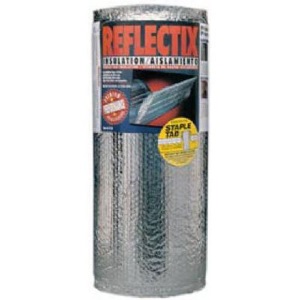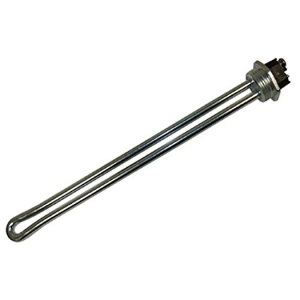What Happens if the Dip Tube Breaks in a Water Heater? Diagnosis and Replacement Tips
 Water heater dip tube
Water heater dip tubeExploring water heater secrets: Have you ever wondered what happens when the dip tube breaks in your water heater?
Let's take a closer look at this interesting issue. We'll uncover how it affects your heater's efficiency and could lead to problems. Discover why the dip tube matters and why fixing it promptly is important for keeping your water heater working well.
Why does the dip tube matter?
The dip tube might sound like a minor component, but it plays a crucial role in the efficient functioning of both electric and gas-powered water heaters.
A dip tube is a plastic tube that extends from the top of the water heater almost to the bottom, allowing cold water to enter and be directed to the bottom of the tank for heating.
Think of it as the traffic director for the heated water. It ensures that the incoming cold water is directed to the bottom of the tank, where it's then heated. This separation of hot and cold water allows you to have a steady supply of hot water whenever you need it, as the hot water rises to the top. Without a functional dip tube, cold water can mix with the heated water at the top, resulting in lukewarm or even cold water coming out of your faucets.
Water heater dip tube types: What options do I have?
Different dip tube designs can impact the efficiency and performance of a water heater. Selecting the right dip tube type depends on various factors, including the water quality in your area, the specific water heater model, and your preferences for efficiency and maintenance.
Here are a few types:
- Standard Dip Tube: This is the most common type. It's a long tube that reaches the bottom of the tank, ensuring incoming cold water is delivered to the lowest point for efficient heating. However, over time, sediment buildup can occur, reducing its effectiveness and potentially leading to performance issues.
- Curved Dip Tube: Some dip tubes are designed with a curved or coiled shape at the bottom. This design helps to prevent sediment buildup at the opening of the tube, maintaining better water flow and heat transfer. It can enhance the longevity of the water heater's efficiency.
- Anti-Sediment Dip Tube: This type is equipped with features that minimize sediment accumulation. It may include a wider diameter or special fins to disrupt sediment settling, maintaining efficient water flow and heating.
What happens if the dip tube breaks in a water heater?
Fixing a broken dip tube promptly is essential to keep your water heater operating smoothly. When the dip tube breaks, it can lead to a series of issues that affect both the comfort of your showers and the energy efficiency of your heater. As cold water mixes with the hot water at the top of the tank, your heater will have to work harder and longer to reach the desired temperature. This not only wastes energy but also increases your utility bills. Moreover, the lukewarm water that reaches your faucets won't be able to provide the same level of comfort, which is particularly noticeable during colder months.
When the dip tube is broken, most homeowners experience one or more of the following symptoms:
- Cold Water Mixing: When the dip tube breaks, cold water may enter the tank at the top instead of being directed to the bottom. This can cause cold water to mix with the hot water near the top of the tank, resulting in lukewarm or cold water coming out of your faucets when you expect hot water.
- Shortened Hot Water Supply: The broken dip tube can cause the hot water to be used up more quickly since it's mixing with the incoming cold water. This can result in shorter hot water showers or baths.
- Inefficient Heating: The water heater's heating element or gas burner will have to work harder and longer to heat the water effectively if the incoming cold water isn't properly directed to the bottom of the tank. This can increase energy consumption and utility bills.
- Sediment Buildup: Without the dip tube directing cold water to the bottom, sediment and minerals that naturally accumulate in the tank can become suspended throughout the tank. This can lead to reduced efficiency and potentially damage the heating element or burner.
- Premature Tank Corrosion: If sediment buildup occurs due to the broken dip tube, it can create areas of uneven heating and cause the tank to corrode more quickly.
- Presence of white plastic particles in your hot water: As a dip tube deteriorates, it might release small plastic fragments that manifest as white particles (flecks) in your hot water. This signals the need to inspect and replace it.
What causes a dip tube to break?
A dip tube in a water heater can break due to a variety of reasons. Some common causes include:
- Age and Wear: Over time, the materials of the dip tube can weaken and deteriorate, especially if exposed to hot water for many years. This can lead to cracks, brittleness, or complete breakage.
- Chemical Reactions: The interaction of minerals, chemicals, and sediment in the water can contribute to the degradation of the dip tube material. Corrosion or chemical reactions can weaken the tube's integrity.
- High Temperatures: Excessive heat can accelerate the breakdown of the dip tube material, causing it to become more susceptible to cracking or breaking. This is especially true if the water heater is set to very high temperatures.
- Manufacturing Defects: In some cases, manufacturing defects can result in dip tubes that are more prone to breakage. These defects might not be apparent initially and can lead to premature failure.
- Poor Water Quality: Water with high mineral content, excessive sediment, or corrosive elements can contribute to the deterioration of the dip tube over time, causing it to break.
- Water Hammer: Water hammer, which is the sudden change in water flow or pressure, can create stress on the dip tube and other components of the water heater, potentially leading to breakage.
- Improper Installation: Incorrect installation or handling during installation can weaken the dip tube, making it more prone to breakage.
- Physical Damage: Accidental impacts or rough handling of the water heater can cause physical damage to the dip tube, leading to cracks or breakage.
To prevent dip tube breakage in your water heater, regularly inspect the tube for cracks or deterioration and replace it every 10 years or as advised by the manufacturer. Additionally, flush the water heater annually to remove sediment buildup, maintain a moderate water temperature around 120°F (49°C), ensure the pressure relief valve functions properly, and be cautious with water softeners that may affect the dip tube's material. Monitoring water quality and avoiding rapid temperature changes can also contribute to prolonging the dip tube's lifespan and maintaining the water heater's efficiency; consulting a professional plumber for guidance can be helpful in ensuring these preventive measures are correctly implemented.
Can I replace a broken dip tube?
You can replace a broken dip tube in a water heater, and it's a task that some homeowners opt to do themselves as a DIY project.
Replacing a broken dip tube involves several steps.
First, you'll need to turn off the power and cold water supply to the heater. Draining the tank using a hose connected to the drain valve allows you to access the dip tube. This is typically located near the top of the tank. Removing the old part involves disconnecting the pipe attached to the cold water inlet. Then, you'll insert the new dip tube into the tank, securing the pipe connection and applying Teflon tape for a proper seal. Once the new part is in place, you can slowly reopen the cold water supply and check for leaks. It's important to exercise caution and follow safety guidelines throughout the process.
In addition to the aforementioned tips, we offer comprehensive instructions on replacing a damaged dip tube. Feel free to utilize them to ensure a correct and effective replacement.
Conclusion
Water heaters can be complex, and improper installation can lead to leaks, inefficiencies, or even safety hazards. Whether you tackle this as a DIY project or opt for professional help, maintaining a functional dip tube ensures your water heater operates effectively and provides reliable hot water supply.
If your water heater falls within the 1993 to 1997 manufacturing range, it's worth noting that some units during that time were equipped with low-quality dip tubes, which could lead to premature failure. This failure might manifest as small white plastic particles entering your plumbing system and causing obstructions in filter screens and aerators. If your water heater is older and displays signs of wear, deliberating on its replacement could also be a prudent consideration.
FAQ
How long do water heater dip tubes last?
The lifespan of a water heater dip tube can vary, but on average, they tend to last around 6 to 8 years. In some cases, they can last the life span of the water heater. However, factors such as water quality, temperature settings, and usage patterns can influence their durability. Regular maintenance and monitoring can help ensure their optimal performance and timely replacement if needed.
What is a self-cleaning dip tube?
A self-cleaning dip tube typically has a unique design that helps prevent sediment from settling at the bottom of the water heater tank.
Some self-cleaning dip tubes have features like a helical or spiral design that causes water to swirl as it enters the tank. This swirling action helps prevent sediment from settling and accumulating on the bottom of the tank. Instead, the sediment is more likely to be carried out during the flushing process or be directed towards the drain valve, keeping the tank cleaner and potentially extending the lifespan of the water heater.
How much does it cost to replace a dip tube?
The cost of replacing a dip tube in a water heater can vary depending on several factors, including the type of water heater you have, your location, and whether you choose to do the replacement yourself or hire a professional plumber. On average, the cost of a dip tube itself is relatively low, typically ranging from $10 to $30.
If you're hiring a plumber to replace the dip tube, you should also consider the labor cost, which can vary based on local rates and the complexity of the job. Plumbing service fees can range from $50 to $150 or more, depending on the region and the plumber's expertise.














